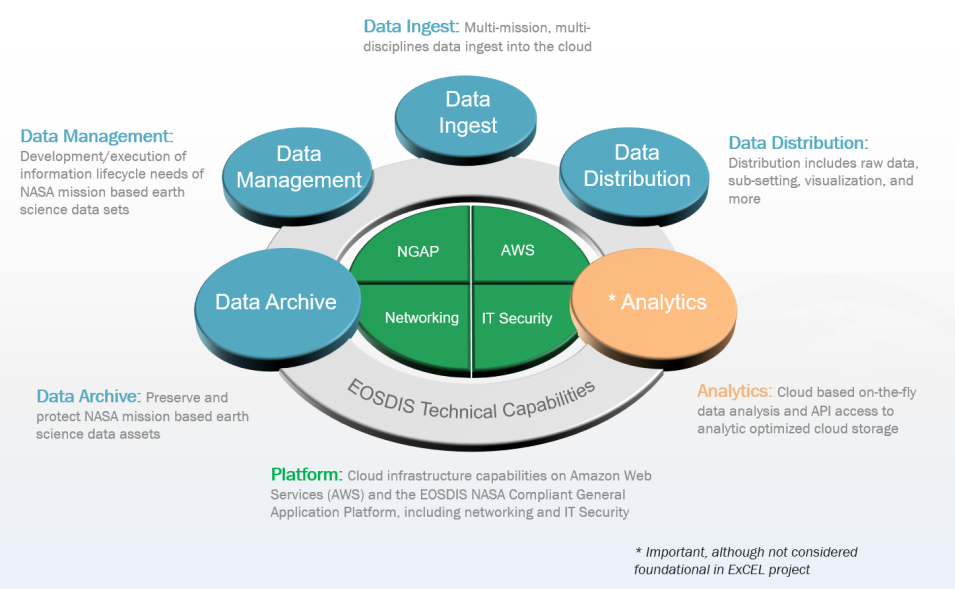Mark McInerney does not hesitate when asked what his favorite planet is: Earth. This is not surprising for someone who has spent the last quarter-century working with Earth science data and making these data work more efficiently. After more than a decade as an operational meteorologist with the National Weather Service (NWS), Mark now oversees the technical requirements of NASA’s Earth Science Data and Information System (ESDIS) Project as the Deputy Project Manager-Technical.
In his current position, Mark coordinates the implementation of technical strategies for moving data in NASA’s Earth Observing System Data and Information System (EOSDIS) collection into the commercial cloud and helps ensure that agency data policies are in line with the needs of a cloud-based data system. This work also requires not only close collaboration with NASA’s Earth Science Data Systems (ESDS) Program, but also cross-agency collaboration with other federal repositories of Earth science data, such as NOAA and USGS. When discussing his work, he echoes a common theme: We are on the cusp of an exciting new era of scientific discovery.
How did your work with NOAA and the Weather Service prepare you for your current position managing ESDIS Project technical operations?
My background is both in meteorology and in software engineering and distributed computing. I married these two using it operationally as a forecaster to do analysis of the data, but then later went to the Meteorological Development Laboratory and NOAA’s Systems Engineering Center to build the tools that the forecasters use. This background was really helpful since I was using a vast amount of Earth observation data from satellites, aircraft, balloons, and field observations. This all is very similar to data in the EOSDIS collection.
What are your responsibilities as Deputy ESDIS Project Manager-Technical?
ESDIS implements organizational, program-level initiatives from NASA’s ESDS Program. My colleagues and I at the Deputy Project Manager level ensure that there is a highly-skilled and diverse team capable of implementing these strategies.
All Deputy Project Managers work together and share responsibilities to support the entire project, including making sure we have the proper organizational structure and that it’s governed properly. We also have to make sure the EOSDIS DAACs [Distributed Active Archive Centers] are aligned properly.
A large portion of my work is related to the evolution of EOSDIS data and services into the commercial cloud. I also reach out and represent NASA and ESDIS in cross-agency collaboration efforts. Most recently I’ve been working with NOAA and USGS on interoperability of the commercial cloud. We’re building our commercial cloud environment, but NASA also is working with other federal satellite-based agencies to build in a similar fashion so you have this interoperability inside the commercial cloud across these agencies. This is important since NASA has vast amounts of viable datasets that the science community needs. But this science community also needs to be able to incorporate data from NOAA and USGS. We all work together to make sure agencies are building capabilities that are supported broadly.
It sounds like there is a lot of interagency work being done to put all of these similar data together and make them work together.
Exactly. There are different agencies, different funding streams, different requirements. I mean, NOAA is an operational organization, but they do have a research component as well.

